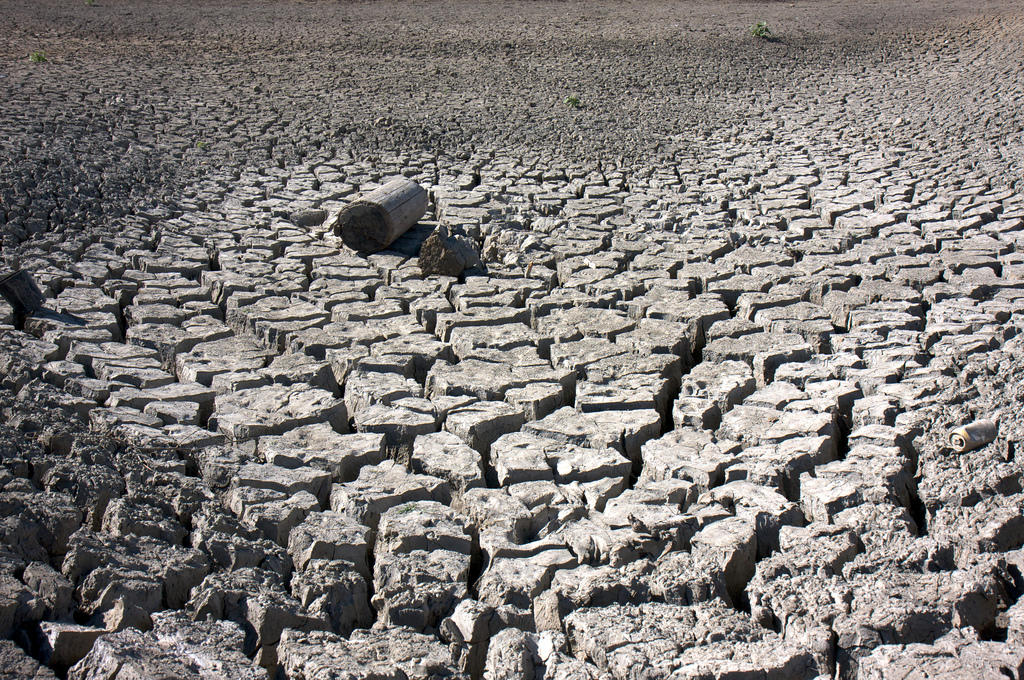
With the California drought entering its fifth straight year in 2016, the impacts to birds are already being seen and felt.
Waterfowl
The number of breeding waterfowl in California has decreased throughout the drought. According to the state’s Waterfowl Breeding Population Survey, in 2015, the total number of breeding waterfowl was 46% below the long-term average. Numbers of mallards, the most numerous breeding duck in the state, are declining rapidly—with only 173,865 estimated in the summer of 2015—a 42% decrease from 2013. Because of low precipitation and decreased water deliveries to wetlands and refuges, the birds face a reduction of breeding habitat. Less room to nest means reduced food resources and greater susceptibility to predators and stress. As Mallards can breed when they are one year old, we are well into a self-perpetuating decline of the species, with each below-average year producing fewer chicks for the next year’s breeding population.
The Pacific Flyway, an important migration route utilized by millions of birds every year, is feeling the stress of the drought. Because wetlands and lakes are drying up earlier, or failing to fill at all, habitat is a hot-commodity for both breeding and migrating birds. Due to the decrease in habitat, more birds are crammed into fewer and smaller patches of habitat. This leads to higher competition for already reduced food resources. It also causes rapid spread of disease. Just like the flu moves through crowded classrooms, botulism is running rampant in these overpopulated wetlands. Not only does the bacteria spread between birds more easily, but drought conditions are excellent for the botulism bacterium, which prefers the shallow, warm waters more common during the drought compared to cooler and deeper lakes present in normal water years. Birds have been reported from Klamath River to Tule Lake. Previous outbreaks of botulism in California have killed as many as 46,000 birds, and similar outbreaks of botulism have been associated with droughts.
Raptors
Birds of prey – hawks, owls, eagles – are also feeling the heat. Across the state, biologists are reporting very low numbers of nesting raptors: nest boxes are empty, there are few or zero nests on preserves, and the birds that are laying eggs are abandoning them before they hatch. This is probably because, as top predators, raptors’ food web has shrunk. The lack of rain has limited vegetation growth, and therefore decreased the number of insects, mice, rodents, and rabbits that raptors rely on to feed themselves and their chicks. This shrinking food web means there just aren’t enough calories for adult raptors to have enough energy to breed and raise young.
The drought is probably just one of many factors impacting raptor populations, though after four years of low precipitation, it is likely that the drought is severely affecting birds. Models of environmental conditions show that long-term drought can change the abundance, richness, and composition of avian communities.
Songbirds
Drought conditions can have an even more severe effect on songbirds, especially since these birds have a shorter lifespan. Some songbirds only live three or four years. Four years into the drought, there may be significant population decreases due to decreased habitat and prey availability and subsequent low breeding rates.
The percent of non-breeding adult Willow Flycatchers, for example, increases in years with severe drought as habitat quality decreases. In 2002, a drought in Arizona caused a near complete breeding failure in a Willow Flycatcher population—when there are usually 150 breeding pairs in the area, only two nests successfully fledged chicks.
Birds that are already threatened, like Least Bell’s Vireo, will be further stressed by drought conditions. Least Bell’s Vireos nest in riparian corridors, many of which haven’t seen water flows in many years. Wetland species, like the Tricolored Blackbird, are also having to find new habitats. Tricolored Blackbirds have been nesting more and more frequently in agricultural fields, and have become susceptible to harvest and other human impacts.
How Audubon is Helping
Efforts to maintain these critical habitats are on-going, between working with water agencies to keep water on National Wildlife Refuges, to paying farmers to create “pop-up” wetlands for migrating birds.
Audubon and our partners are carrying out activities to maintain and, in some cases, enhance critical habitat, while paying close attention to overall water use. In some cases, simply keeping wetland and rice fields flooded longer, and drawn down more slowly, provides habitat for shorebirds and waterfowl for a longer period of time, increasing the period and abundance of food resources without additional water use. Audubon California is also partnering with Audubon chapters in the central valley to monitor impacts of drought on waterbirds to National Wildlife Refuges – data is being presented monthly to refuge managers and will help us build a longer term understanding of the impacts of drought on waterbirds.
At a policy level, Audubon is supporting policies that improve water efficiency, making sure that drought legislation maintains surface water for birds, and helping ensure water delivery to wildlife refuges. Also, as this is could continue to be an issue, supporting climate change policies will help birds for years to come.
By Garrison Frost
Monthly Giving
Our monthly giving program offers the peace of mind that you’re doing your part every day.




